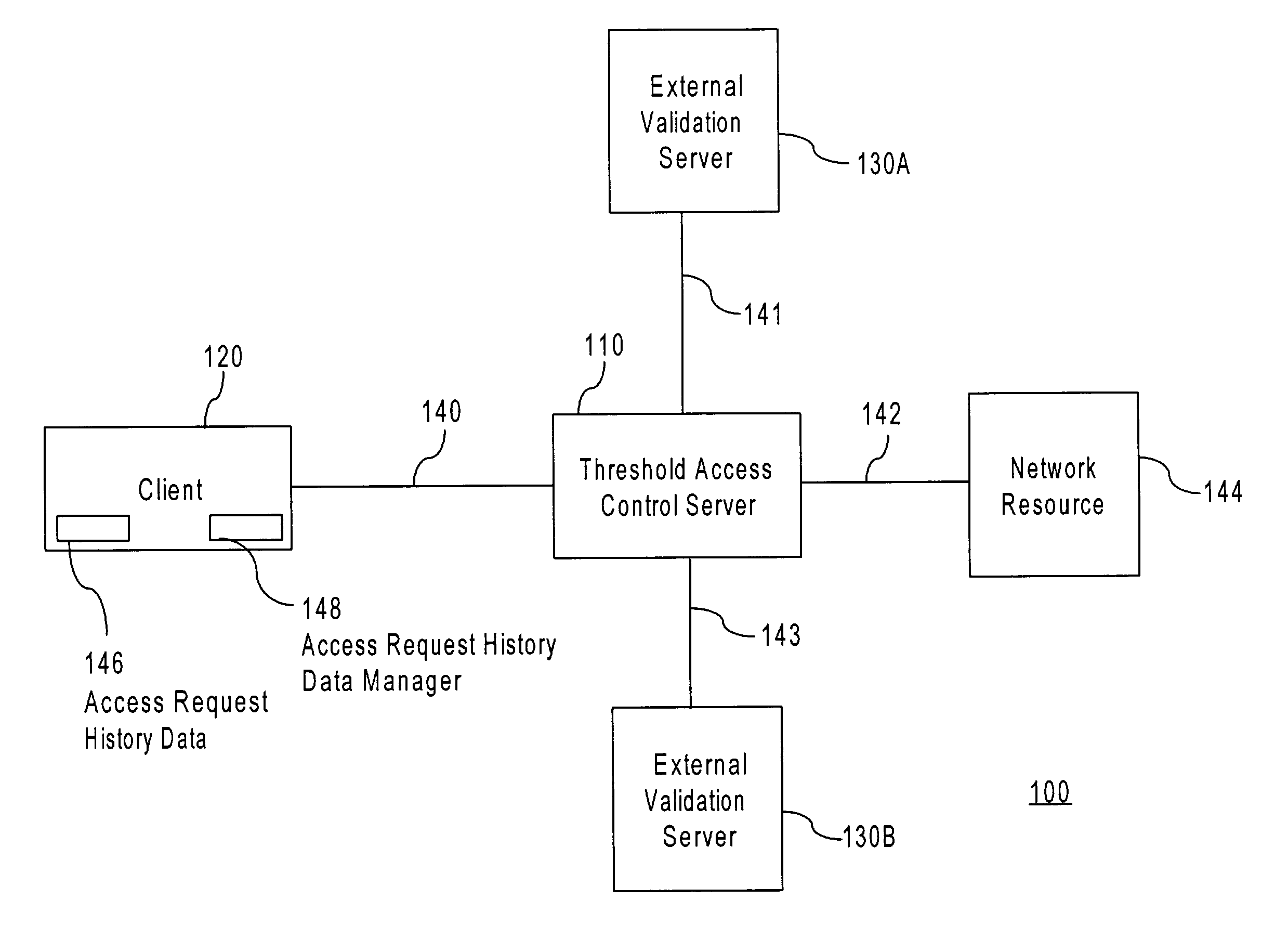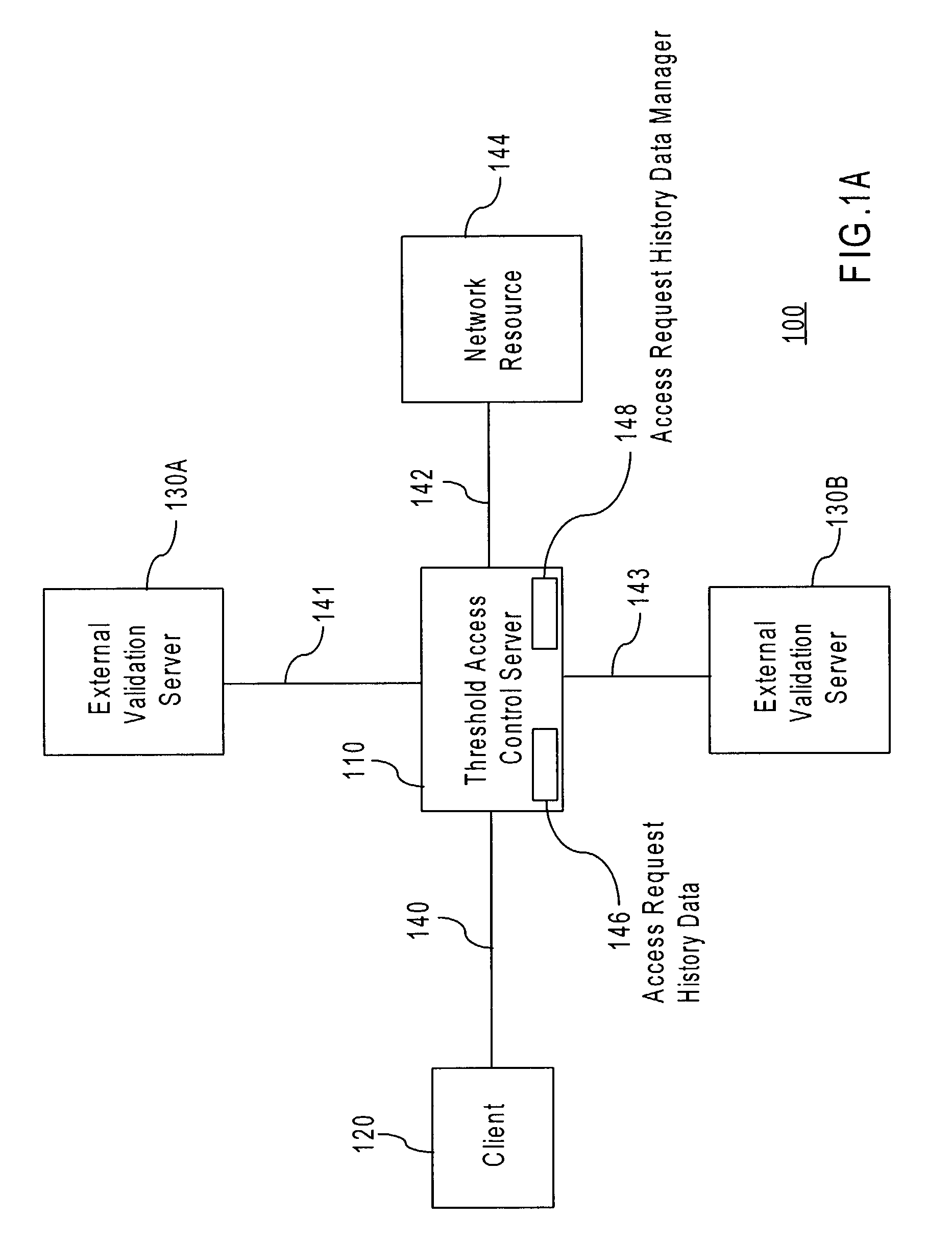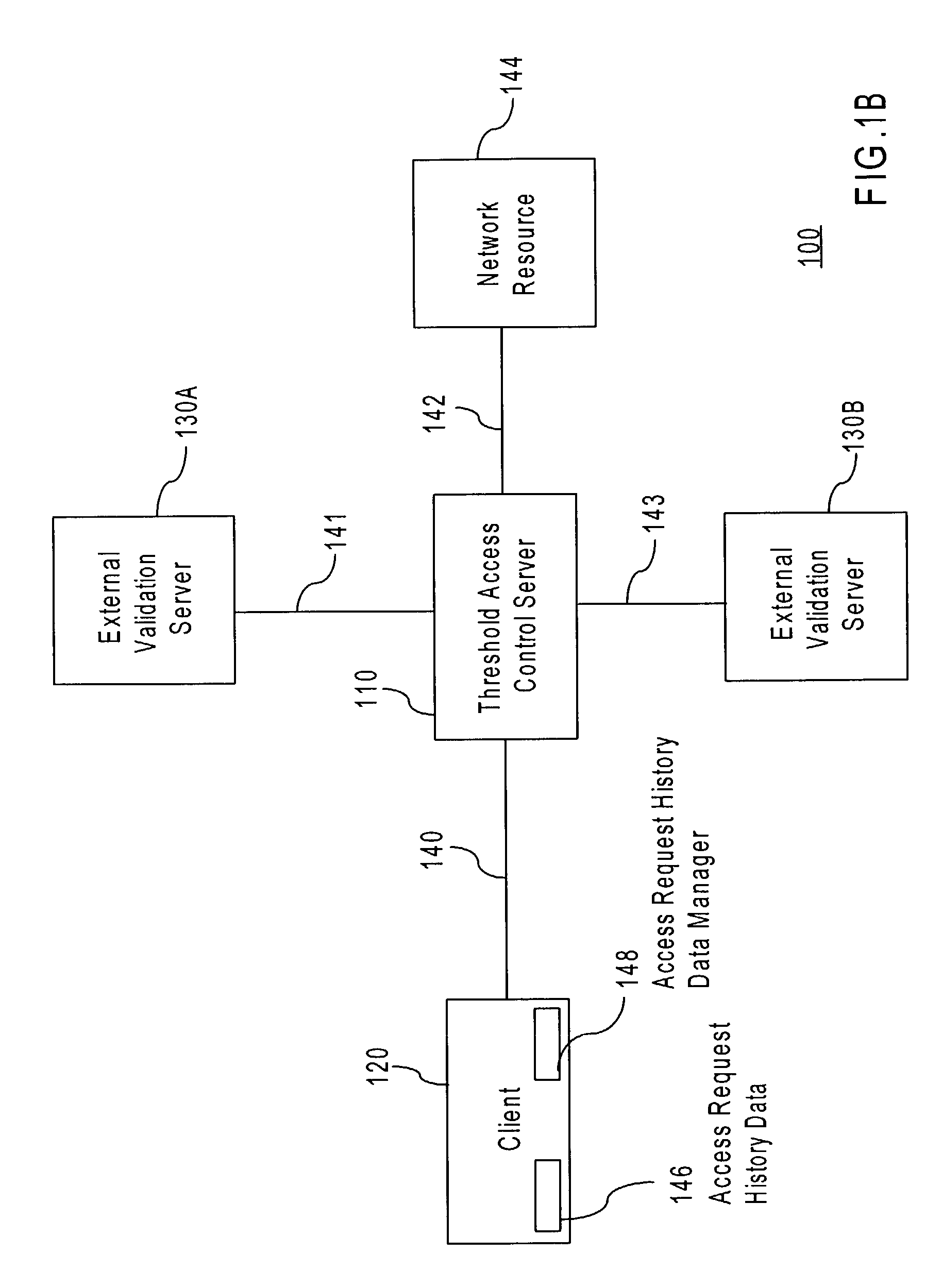Threshold access based upon stored credentials
a technology of stored credentials and access thresholds, applied in the direction of digital transmission, instruments, signs, etc., can solve the problems of inaccessibility of external validation servers to access control servers, inability to authenticate credentials, and inability to access control servers
- Summary
- Abstract
- Description
- Claims
- Application Information
AI Technical Summary
Problems solved by technology
Method used
Image
Examples
Embodiment Construction
[0022]A method and apparatus for authorizing a user to access a data communication network is described. In the following description, for the purposes of explanation, numerous specific details are set forth in order to provide a thorough understanding of the present invention. It will be apparent, however, that the present invention may be practiced without these specific details. In other instances, well-known structures and devices are shown in block diagram form in order to avoid unnecessarily obscuring the present invention.
[0023]Various aspects of the invention are described hereinafter in the following sections:
[0024]I. Architecture Overview
[0025]II. Functional Overview
[0026]III. Authorizing an Access Requester Using Threshold Access
[0027]IV. Implementing Mechanisms
[0028]I. Architecture Overview
[0029]FIG. 1A is a block diagram that illustrates the functional components of a threshold access control system 100. Threshold access control system 100 may be used to provide thresho...
PUM
 Login to View More
Login to View More Abstract
Description
Claims
Application Information
 Login to View More
Login to View More - R&D
- Intellectual Property
- Life Sciences
- Materials
- Tech Scout
- Unparalleled Data Quality
- Higher Quality Content
- 60% Fewer Hallucinations
Browse by: Latest US Patents, China's latest patents, Technical Efficacy Thesaurus, Application Domain, Technology Topic, Popular Technical Reports.
© 2025 PatSnap. All rights reserved.Legal|Privacy policy|Modern Slavery Act Transparency Statement|Sitemap|About US| Contact US: help@patsnap.com



